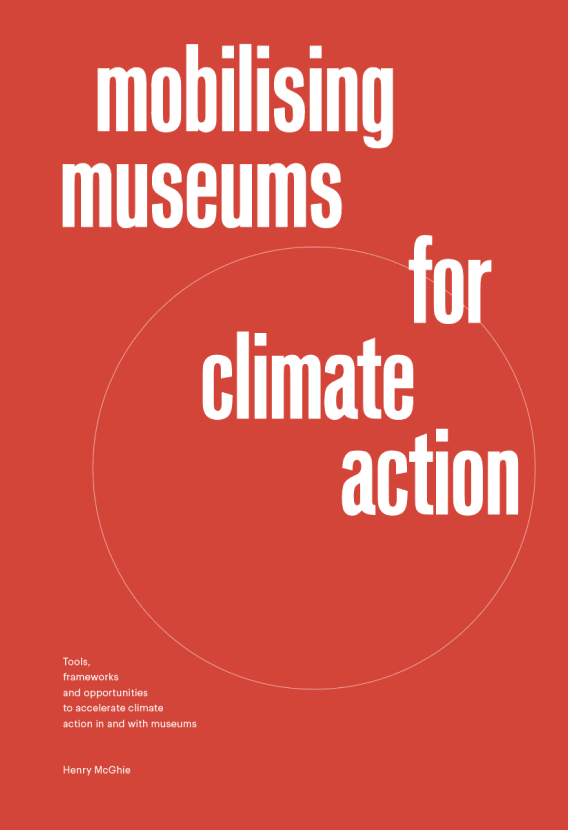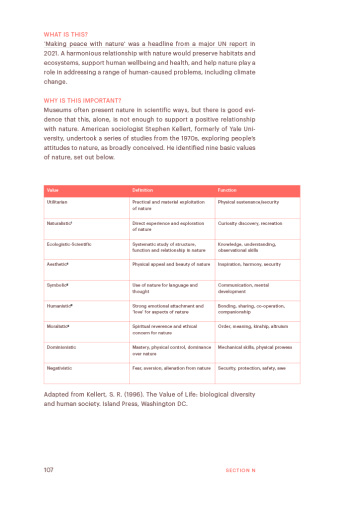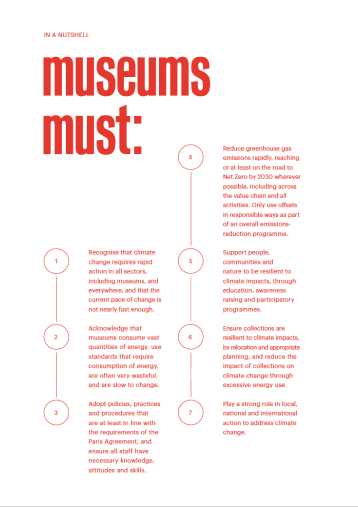Reimagining Museums for Climate Action: a resource to inspire and support museums to take radical climate action
( Toolbox )
‘Reimagining Museums for Climate Action’ was launched as an international design and ideas competition on 18 May 2020, International Museums Day. It challenged designers, architects, academics, artists, poets, philosophers, writers, museum professionals, Indigenous groups, community groups and the public at large to radically (re)imagine and (re)design the museum as an institution, to help bring about more equitable and sustainable futures in the climate change era.
The Reimagine section of the Museums for Climate Action website features 79 of the concepts that were submitted to the competition. The website aims to inspire and support museums to consider how they could take more radical climate action, and to consider what, if anything, is preventing them from enacting these ideas now.
The competition generated a great range of options and possible routes to transform museums to meet the needs of climate action. Eight of the concepts were invited to develop their ideas into exhibits, which were shown in Glasgow Science Centre ahead of and during COP26.
Weathering With Us (Singapore) imagines a new kind of contemplative museum space where climate action is materialised in the very structure and experience of the building LINK
Existances (Brazil) shows the power of collective knowledge in the fight against climate change, imagining a network of micro-museums embedded in and responding to the diverse lifeworlds of indigenous communities LINK
Elephant in the Room (USA) offers a fantastical story in which a stuffed elephant comes to life and forces museums and wider society to confront their role in climate change LINK
Museum of Open Windows (UK) repurposes the existing global infrastructure of museums to support inter-community collaboration and citizen research on climate change and climate action LINK
Dundee Museum of Transport (UK) asks how a traditional museum might evolve to address the contemporary challenge of sustainable travel in an inclusive way LINK
Story:Web (UK) mobilises existing museum collections to empower people to curate their own climate stories, experiences and networks on a global scale, connecting the masses of online information available, with the opportunities of the internet to network and share climate stories and collaborate to create desired futures LINK
A Series of Collective, Non-Statistical Evidence (Indonesia) applies familiar museum practices of collecting, display and participation to community settings, to present and discuss personal experiences of climate change LINK
Natural Future Museums (Brazil) asks what it would mean to confer museum status on existing Indigenous lands in forests and other places that play a key role in climate action LINK
The eight exhibits reflect a wide range of approaches that address various points regarding climate mitigation, such as Weathering With Us with its enhanced mineralisation, and strengthening carbon sinks, such as Natural Futures Museums; and adaptation, from supporting people to adapt to incoming green vehicles (Dundee Museum of Transport), to supporting networks for community-led climate adaptation (Museum of Open Windows; Story:Web; A Series of Collective, Non-Statistical Evidence) and hyper-local adaptation (Existances).
A further 71 concepts are featured on the Museums for Climate Action website, to provide a rich source of information and inspiration that can help museums to explore how they might be able to change to better support climate action. Some of the common themes of the concepts are included below, although this list is not exhaustive, and readers are encouraged to browse the concepts on the website.
Museum practices may themselves stimulate community climate action
For example, Muserealism: Think Like a Museum applies traditional museum practices of collecting and preserving to people’s own lives, to explore how people can regard their own possessions as treasured museum pieces.
Museums could facilitate community dialogue for climate action
Exhibiting Perspective establishes a process for people to explore and contribute to a reimagining of their city, using a decentred type of museum experience, and inclusive participation methods.
Museums could incorporate Indigenous knowledge and perspectives into practices and programmes
OPUS prioritised ‘ways of doing’ over preservation of objects, drawing on Indigenous knowledge and philosophy.
Reusing buildings as a form of museum could contribute to climate action
Terrestreum takes an abandoned airfield and converts it into a place where plants and trees grow, and people interact with them: the focus moves from consumption of heritage, to production of a green future.
Museums may generate renewable energy as a form of climate action
E-WERK Luckenwwalde is a contemporary arts centre based in a disused coal-fired power station, and generates green electricity that it sells back to the national grid in Germany, as a kind of ‘art power’. The centre is a hub for creative activity to address climate change.
Museums could promote the green and circular economy, and restoration of nature
Aquify integrates a museum in a water treatment centre, so that people not only experience climate change as a topic: the museum physically contributes to efficient use of natural resources.
Museums could be built from renewable materials or materials that trap carbon
After the Anthropocene imagines a type of museum based on a traditional Indonesian building called a bale. The ‘walls’ are living bamboo, while the gathering space is a place for dialogue and the valuing of traditional knowledge and perspectives.
Museums could be thought of as being for plants and animals, rather than people
Living Museum uses old building materials to create space for biodiversity in New York as a catalogue of, and monument, to the city’s nature. The ‘building’ preserves, rather than destroys, nature.
Museums could help create the networks for people to create, share and network their own stories and experiences
The Global Dialogue Museum collects and shares people’s experiences and concerns about climate change, which are shared globally as a network, to unleash the power of global dialogue.
Museums may help people explore and imagine alternative futures, and backcast to explore pathways for transformation
Carbon Ruins is a speculative museum set in 2053. Climate change has been addressed, and visitors are invited to backcast to imagine the trajectory that enabled society to make the transformations required for a future aligned to the Paris Agreement.
Museums could be mobile
B.O.A.T (Barge of Arts and Technology) tours around, as a research station and agora for public education and participation.
Museum space could form a resource for climate action
The Green Room Initiative gives a proportion of museum space over to climate action, proportionate to the scale of greenhouse gas emissions of the country, and the need for climate action.
Responsible tourism could support climate action
747km on Foot takes people on a long walking or cycling journey from St. Petersburg to Moscow, encouraging a form of ‘slow tourism’.


